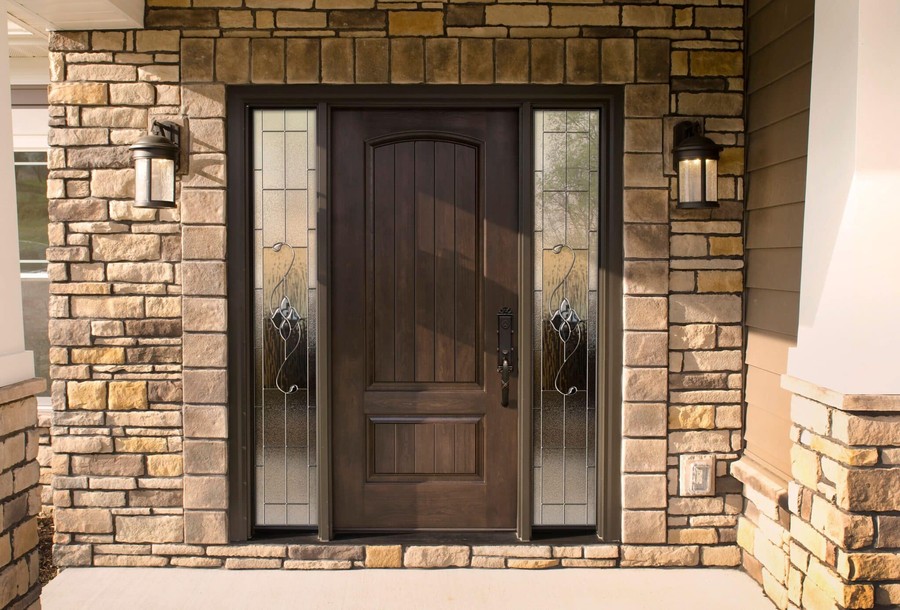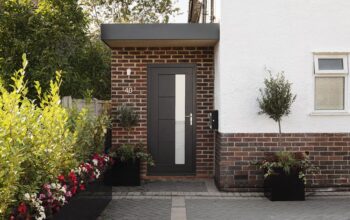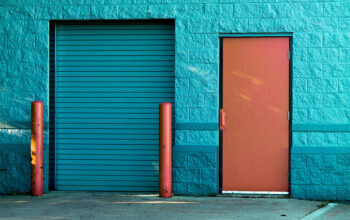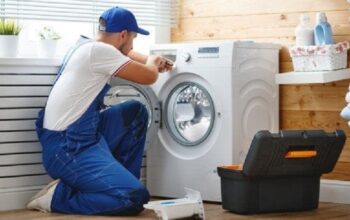In regions prone to extreme weather—whether it’s blistering heat, freezing cold, heavy rains, or high winds—your home’s house doors (haustüren) serve as the first line of defense. Not only do they protect against the elements, but they also contribute to energy efficiency, security, and curb appeal. Choosing durable house doors for harsh weather isn’t just about aesthetics; it’s a practical investment that can save you money on repairs and utility bills over time. With climate patterns becoming more unpredictable, homeowners are increasingly seeking weather-resistant entry doors that can withstand Mother Nature’s toughest challenges.
Imagine living in a coastal area battered by hurricanes or a northern state enduring brutal winters. A flimsy door might warp, crack, or fail to seal properly, leading to drafts, water damage, or even structural issues. According to experts, selecting the right materials and features can make all the difference in longevity and performance. In this comprehensive guide, we’ll explore what to look for in durable exterior doors, from materials and key features to installation and maintenance tips. Whether you’re renovating or building anew, understanding these factors will help you pick doors that stand strong against harsh conditions.
By focusing on high-quality, weatherproof options, you can enhance your home’s resilience while boosting its value. Let’s dive into the essentials of choosing doors built to last.
Understanding the Impact of Harsh Weather on Home Doors
Harsh weather can wreak havoc on standard doors, causing premature wear and tear. In hot climates, intense UV rays can fade finishes and cause materials to expand or crack. Cold weather brings freezing temperatures that lead to contraction, warping, and ice buildup around seals. Humid or rainy areas increase the risk of rot, mold, and rust, while windy regions test a door’s structural integrity against debris and pressure.
For instance, in hurricane-prone zones, doors must resist high winds and flying objects to prevent breaches that could compromise the entire home. Extreme temperature swings, common in places like the Midwest, demand doors with excellent thermal stability to avoid energy loss. Recognizing your local climate is crucial—coastal homes might prioritize corrosion resistance, while desert dwellers focus on UV protection.
Statistics show that poorly chosen doors can lead to up to 20% higher energy bills due to air leaks. By opting for durable designs, you mitigate these risks, ensuring your home remains comfortable and secure year-round. This awareness sets the foundation for selecting features that address specific weather challenges.
Best Materials for Weather-Resistant Doors
When it comes to enduring extreme weather, the material of your door is paramount. Not all options are created equal, and choosing the wrong one could mean frequent replacements.
Fiberglass stands out as a top choice for harsh environments. It’s incredibly durable, resisting warping, cracking, and fading even under intense sun or freezing conditions. Fiberglass doors mimic the look of wood but offer superior insulation with foam cores that maintain energy efficiency. They’re low-maintenance and ideal for humid or coastal areas where moisture is a constant threat.
Steel doors provide unmatched strength and security, making them perfect for areas with severe storms or high winds. With a galvanized coating, they resist rust, but opt for 24-gauge or thicker steel for maximum durability. These doors often feature polyurethane foam insulation, helping to block out cold or heat. However, they can dent, so they’re best suited for protected entryways.
Wood doors offer timeless elegance but require careful selection for weather resistance. Species like mahogany or oak, when treated with protective finishes, can handle moderate climates. For harsher conditions, look for engineered wood composites that prevent warping. Avoid untreated wood in wet or sunny areas, as it can swell or fade quickly.
Aluminum and composite materials are emerging favorites. Aluminum is lightweight and rust-proof, great for rainy regions, while composites blend wood fibers with resins for enhanced stability. In hot climates, fiberglass or steel with UV-resistant coatings excel at preventing sun damage.
Ultimately, fiberglass often wins for versatility in extreme weather, balancing cost, durability, and aesthetics. Assess your climate and budget to pick the material that offers the best long-term performance.
Essential Features in Durable Exterior Doors
Beyond material, specific features ensure a door’s resilience against harsh weather. Start with insulation: Look for doors with a high R-value, indicating better thermal resistance. Foam-filled cores, like polyurethane, prevent heat transfer, keeping interiors cool in summer and warm in winter.
Weatherstripping and seals are critical for blocking drafts, rain, and dust. Opt for durable silicone or rubber gaskets over foam, as they maintain flexibility in extreme temperatures. Adjustable thresholds and sweep seals at the bottom enhance this protection.
For storm-prone areas, impact-resistant glass is a must. Laminated or tempered panes withstand debris without shattering, often meeting hurricane codes. Reinforced frames, preferably steel or composite, add stability against wind pressure.
Hardware matters too—choose corrosion-resistant hinges, locks, and handles made from stainless steel or brass. Multi-point locking systems provide extra security and a tighter seal.
Energy-efficient certifications, like ENERGY STAR, signal a door’s ability to handle weather while reducing bills. Finally, consider UV-protective finishes or paints that prevent fading and cracking.
These features collectively create a barrier that’s not just tough but also efficient, ensuring your door performs reliably in any condition.
Types of Doors Suitable for Extreme Conditions
Different door types cater to various needs in harsh weather. Entry doors, the main focus, should prioritize strength and insulation. Fiberglass or steel slab doors without glass are solid choices for maximum durability.
For homes needing natural light, consider doors with sidelites or transoms featuring impact glass. French doors, when made from weather-resistant materials, work well for patios but require robust sealing to prevent leaks.
Storm doors add an extra layer of protection over primary doors. Aluminum or fiberglass models with full-view glass allow ventilation while shielding against rain and wind. In cold climates, insulated storm doors reduce heat loss.
Sliding patio doors in composite frames resist warping in humidity, offering smooth operation even after storms. For ultimate resilience, hurricane-rated doors combine reinforced construction with energy-efficient elements.
Match the door type to your home’s architecture and weather patterns for optimal functionality.
Top Brands for Reliable Weatherproof Doors
Several brands excel in producing durable doors for harsh weather. Therma-Tru is renowned for fiberglass doors that mimic wood while offering superior weather resistance and insulation.
Pella provides a range of energy-efficient options, including vinyl-clad wood and fiberglass, ideal for extreme temperatures. Andersen focuses on sustainable, high-performance doors with excellent UV protection.
Jeld-Wen and Masonite offer customizable steel and composite doors built for security and weather endurance. Weather Shield specializes in premium wood doors with advanced finishes for harsh climates.
For impact-resistant needs, brands like PGT and CGI deliver hurricane-proof entryways. Research local reviews and warranties to find the best fit.
Installation Tips for Maximum Durability
Proper installation is key to a door’s performance in harsh weather. Hire certified professionals to ensure precise fitting, as gaps can lead to leaks.
Use flashing tape around frames to prevent water intrusion, and apply caulk generously but neatly. In windy areas, anchor frames securely to the structure.
Level the door perfectly to avoid stress on hinges, and test seals post-installation. For insulated models, verify foam integrity during setup.
Following manufacturer guidelines extends warranty coverage and ensures longevity.
Maintenance Practices to Extend Door Lifespan
Regular maintenance keeps doors resilient. Clean surfaces quarterly with mild soap, avoiding abrasive chemicals.
Inspect seals and weatherstripping annually, replacing worn parts promptly. Lubricate hinges and locks to prevent rust.
In sunny climates, reapply protective coatings every few years. For wood doors, refinish as needed to guard against moisture.
Address minor issues like dents or scratches quickly to avoid escalation. With consistent care, your doors can last decades.
Conclusion: Investing in Lasting Protection
Selecting durable house doors for harsh weather involves balancing materials, features, and maintenance to suit your environment. By prioritizing fiberglass or steel with robust insulation and seals, you safeguard your home against the elements while enjoying energy savings and peace of mind.
Remember, quality brands like Therma-Tru and Pella offer reliable options backed by warranties. Consult local experts for tailored advice, and don’t skimp on installation. With the right choice, your doors will not only endure but enhance your home’s appeal for years to come.




